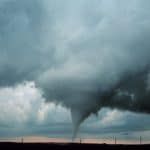The problem with expanding the U.S. military
By Gordon Adams | April 30, 2007
The United States is at war; well, its military is anyway. The United States chose this war, chose badly, and conducted it even more poorly. Washington amply demonstrated that it’s not capable of exporting democracy and reconstructing a country–especially when that country is in the midst of a civil war unleashed by U.S. incompetence. Perhaps we’re learning that the world is a vastly more complicated place than our naive assumptions led us to believe. Sadly, some in the United States think that enlarging the military will fix our failures in this war and enable us to conduct a similar intervention with more success in the future.
These people should take a look at the global reality: The United States hasn’t been this safe since the start of the Cold War; it’s without military peer; and it no longer needs to worry about being obliterated by a massive nuclear strike.
And yet, it is said, the United States needs more soldiers because the world is a dangerous place. As Frederick Kagan and Michael O’Hanlon wrote in a recent Stanley Foundation brief (“The Case for Larger Ground Forces”): “We live at a time when wars not only rage in nearly every region but threaten to erupt in many places where the current relative calm is tenuous. . . . No country besides the United States is in a position to lead the way in countering major challenges to the global order.”
The army and marines want more troops. President George W. Bush wants them, too, as do many Democrats such as New York Sen. Hillary Clinton, Illinois Sen. Barack Obama, and New Mexico Gov. Bill Richardson. So does the Progressive Policy Institute and the Center for American Progress.
But before the United States assumes the role of global cop–with little need and great cost–it should think about what job it wants to give a larger ground force. Expanding the military without a clear strategy or mission puts the expansion cart well ahead of the strategic horse.
Set aside the real reason for the push to add more troops–the Iraq War. The war’s long deployments, short at-home stays, and increased casualties are clearly stressing the army and the marines. But as Gen. George Casey Jr. put it recently, “The army I left in Iraq and the army I led there for two and a half years is hardly a broken army.”
Virtually all defense analysts (in or out of uniform) concur that expanding the ground forces will not alleviate the current pressure on U.S. troops. Since it takes 3-5 years to produce a well-trained, deployable force, a larger ground force would only help in Iraq if we’re still there around 2012.
So if a larger force won’t help ease the current situation in Iraq, what strategy and mission will it assume? To the extent anyone has spoken or written about strategy, the justification seems to be “you never know.” Casey says he wants his strategic reserve back as a hedge. Kagan and O’Hanlon worry about a disintegrating Pakistan, a collapsing Indonesia, a North Korean invasion of South Korea, or a nuclear-armed Iran. Last December, the Washington Post wondered if we might need more forces to engage in a land conflict with China.
In a forthcoming piece in The American Interest, Lawrence Korb and Peter Ogden at the Center for American Progress make a slightly different argument: The United States needs more forces to engage in counterterrorism and counterinsurgency operations and to carry out stabilization and reconstruction missions in failed states. (Kagan and O’Hanlon also make this point.)
None of these justifications constitutes a strategy, and they all have severe problems. First, many depend on the notion that because we’re stuck in Iraq, we can’t do anything else without more troops. But once we leave Iraq, Casey will get his strategic reserve back.
Second, many of the future crisis scenarios are fantasies that no sensible policy maker will consider. The only reality-based argument for a larger combat force is the North Korean scenario. But we’ve deliberately encouraged the creation of a large, well-armed South Korean military to deter and counter such an invasion. Well before Iraq, we were reducing the visibility and size of the U.S. presence in South Korea. In fact, Army Gen. B. B. Bell, the commander in Korea, told the Senate Armed Services Committee in late April, “It is doubtful that the North Korean military in its current state could sustain offensive operations against the South.”
The Chinese and Indonesian scenarios are laughable. As for Iran, a ground invasion is unthinkable–the entire U.S. ground force would be unable to occupy, pacify, stabilize, and reconstruct a nation of 60 million people who don’t want us there. Ninety-two thousand more troops won’t change that. If we were foolish enough to preemptively strike Iran’s nuclear capability, it would be by sea and/or air, only special forces would be on the ground.
The favorite scenario is Pakistan. A shaky regime, a strong current of Islamic fundamentalism, nuclear weapons–these are all elements of the nightmare scenario. But after any overthrow of the current Pakistani government, U.S. special forces (with the Pakistani military) would be tasked with securing Pakistan’s warheads. Like Iran, a U.S. occupation opposed by 165 million angry Pakistanis would be impossible.
As for occupying, stabilizing, and reconstructing failed states and their economies, this mission (not a strategy) sounds a lot like “fighting the last war.” We’ve conducted this mission for the past four years in Iraq (five in Afghanistan); more soldiers will not help us do it better. We might, as Korb and Ogden recommend, “train” U.S. soldiers for international and internal policing, nation-building, reconstruction, or even public diplomacy. That still doesn’t change the fact that they’re the wrong instrument for the job, and by doing it, they’re dragged away from their core mission and capability.
Dealing with the global reality that states fail demands two things–neither of which have anything to do with expanding U.S. ground forces. First, it’s critical to develop a multilateral approach to the problem, especially given that many parts of the world are uneasy about having the U.S. military involved in such missions. Second, we need to create national and international capabilities outside of the military–expertise in law enforcement, governance, and economic recovery–to aid in nation-building efforts. Expanding the U.S. ground force for this mission gains nothing.
As for counterinsurgency, one would think the United States would realize that history is littered with failed counterinsurgency operations, especially for Western military powers in countries where they are not welcome–i.e., Vietnam and Iraq. In Iraq, we’re dealing with an insurgency and a civil war, making the task even more impossible. The army’s new counterinsurgency manual (no matter the number of soldiers implementing it) is unlikely to reverse that history.
Finally, if the mission is counterterrorism, a larger army is not the right answer. Skilled special forces are more likely to be the uniformed instrument of choice. And success will depend on allied cooperation, policing, diplomacy, and tracking financial flows–activities that are not the military’s responsibility.
As for cost, expansion is expensive. The Congressional Budget Office estimates that adding the forces requested by President Bush would require a minimum of $108 billion over the next five years; the army estimates $112 billion. We can afford it. The problem is that once the Defense Department leaves Iraq, the flood of emergency supplemental funding will end and defense budgets will likely shrink. At the same time, the Pentagon will have 92,000 more mouths to feed, train, and equip.
Lastly, it will be difficult and expensive to raise this force. To ensure it can meet its current goals, the army has lowered its recruiting standards in terms of educational experience, moral behavior, and age, and pushed recruitment spending to 20 times the pre-Iraq levels. So finding the recruits to fill out an enlarged military is going to be a real challenge.
The case for expanding the military then rests on a “hedge” against the unknown–creating a larger force without a clear strategic justification or mission. Post-Iraq, the existing force will serve as this “hedge.” A larger force, however, might prove counterproductive to national security, as the long list of missions the United States could give a larger force sends the wrong message to the rest of the world–namely that the United States will continue to be the global constabulary and stabilizer of choice.
The U.S. presence in Iraq has already sent this message, and Washington has found that the rest of the world is no longer receptive to it. The future of our ability to lead internationally and the future role of military force in our statecraft depends on clearly defining strategy before we add personnel. And it will rest on a different style of global engagement, one that works with allies and uses all the tools of statecraft. Once home, our current forces are more than adequate to play their appropriate role in that broader strategy of engagement.
Together, we make the world safer.
The Bulletin elevates expert voices above the noise. But as an independent nonprofit organization, our operations depend on the support of readers like you. Help us continue to deliver quality journalism that holds leaders accountable. Your support of our work at any level is important. In return, we promise our coverage will be understandable, influential, vigilant, solution-oriented, and fair-minded. Together we can make a difference.
Topics: Columnists















